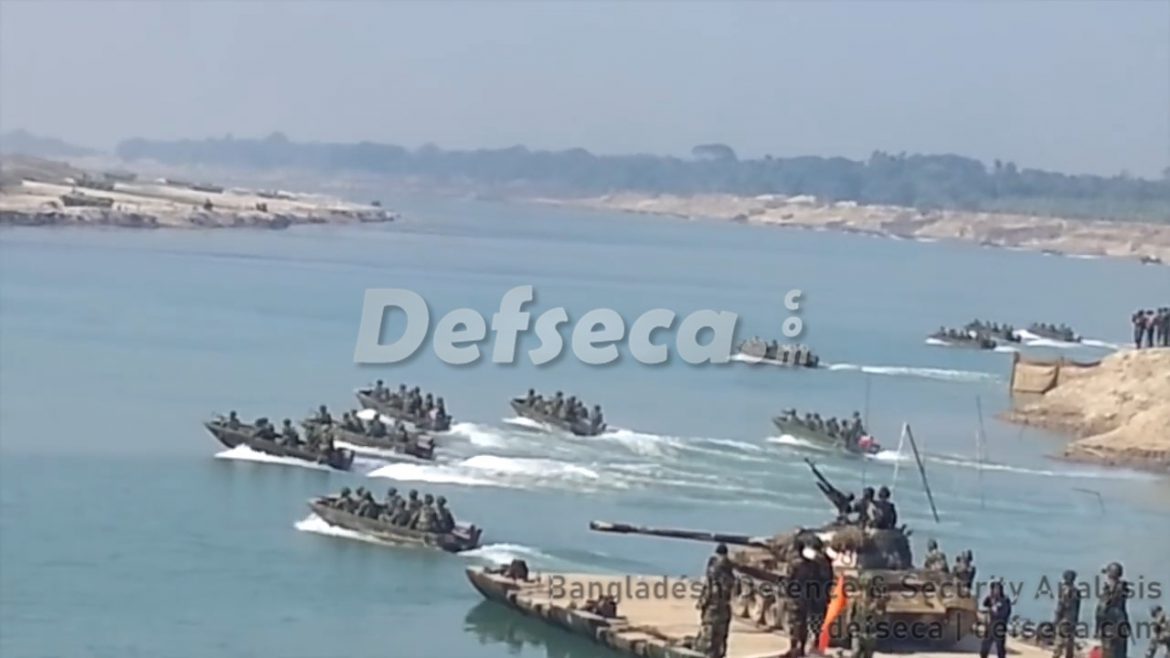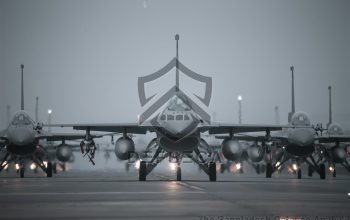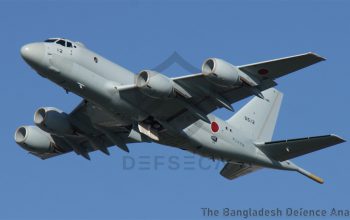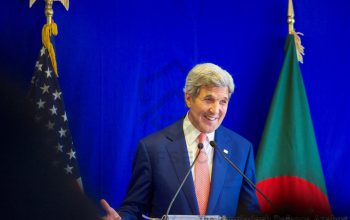Bangladesh maintains a multi-layer national defence system comprised of the regular armed forces and the paramilitary forces. Of these the armed forces are maintained under the Ministry of Defence (MoD), whilst the Paramilitary Forces such as Bangladesh Ansar-VDP (National Guard), Border Guard Bangladesh and scores of other forces work under the Ministry of Home Affairs (MoHA).
At an organisational level the Bangladesh Army maintains three Corps level forces under Forces Goal 2030. The Corps level forces are each having responsibility to operate in Eastern, Central and Western Bangladesh.
In times of war the Bangladesh Army can mobilise additional resources of the paramilitary forces to swell available manpower to nearly 7 million personnel whereas in peace time to just under 210,000 personnel active troops.
Bangladesh is not at war with any of its neighbours so it has the available resources to concentrate almost the full strength of its armed forces on any aggressor. If we compare the available resources of the Bangladesh Army against those of neighbouring countries then Bangladesh can deploy many more men at war than them. And usually a defender has a 4 to 1 advantage over any attacker. This can be multiplied further more in Bangladesh because of its extensive riverine topography where there are more than 700 rivers and tributaries.
Today Bangladesh spends around 1% of its GDP on defence whereas some neighbouring countries spend as much as 4-5% officially on defence (and more in black budget allocations). At war time Bangladesh maintains the financial ability to relocate money to war efforts so the defence budget or defence equipment capital spending can swell according to requirements.
The Bangladesh Armed Forces very existence is based on threat to counter external enemies. So being the largest neighbouring country with most problems with Bangladesh it is natural that the threat perception shows India to be the major threat to Bangladesh.
Myanmar hardly has any military or economic resources to defend the entirety of their own territory. Much of their territory remains under the control of drug lords and rebel groups. They are in no real position to fight and win a war against Bangladesh, which has three to four times more resources (human resources, GDP, military equipment).
Bangladesh maintains a minimum deterrence on the border with the deployment of the Border Guard Bangladesh (BGB), which acts as the first line of defence.
Additional deployments of BGB and regular armed can be made within hours if any untoward incidents were to occur along the frontier.
Perhaps the biggest matter of strength for Bangladesh is that its population is extremely united when it comes to the preserving Bangladesh’s sovereignty.
Bangladesh is largely a Bengali majority country with a small number of Tibetan-Burmese origin peoples. Islam is also the majority religion followed by Hinduism, Buddhism and Christianity however religion is not a concerning factor as Bangladesh has a largely liberal society, whereas in neighbouring countries religion and ethnicity always play an important role.
Bangladesh foreign policy and defence policies are clear in that Bangladesh will not instigate or provoke acts of war however it maintains the readiness to fight any types of enemies. This stands true from 1971 till today.




